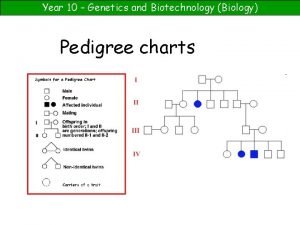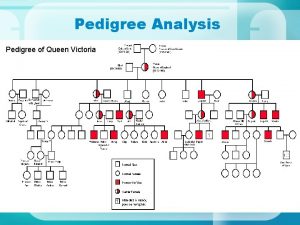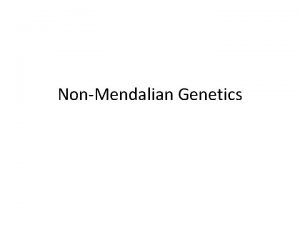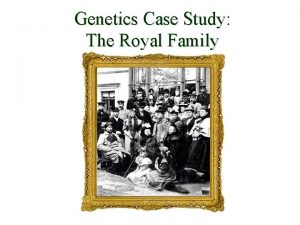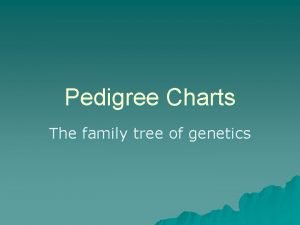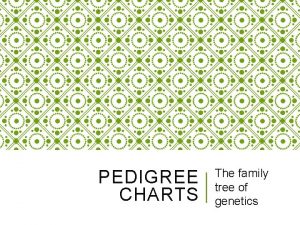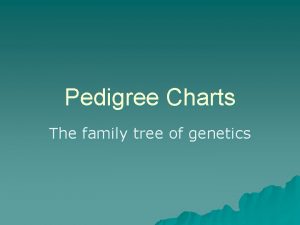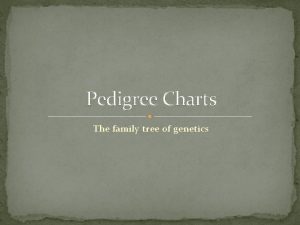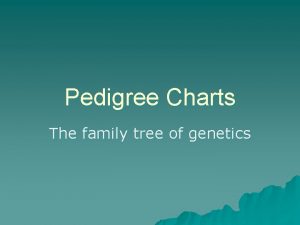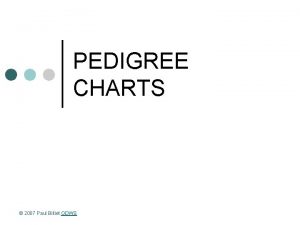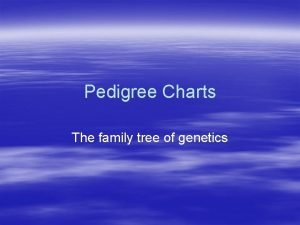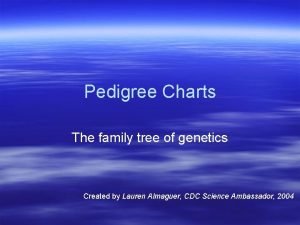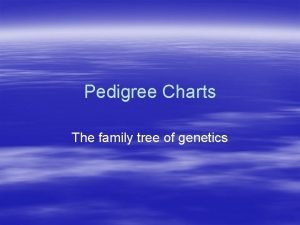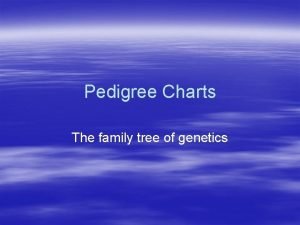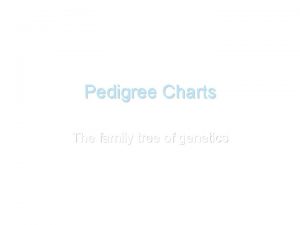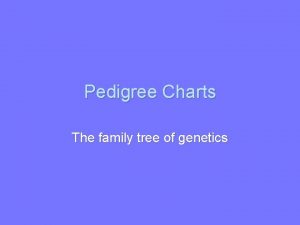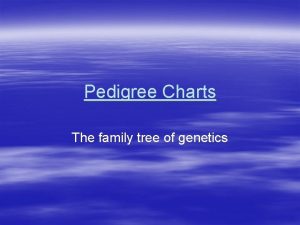Pedigree Charts The family tree of genetics Learning



















- Slides: 19

Pedigree Charts The family tree of genetics

Learning Objective • I can use the correct symbols to put together a pedigree chart • I can predict a genotype based on a pedigree chart

Pedigree Charts I II III

What is a Pedigree? u. Pedigree – a tool used to study pattern of inheritance u. A pedigree chart traces the occurrence of a trait through generations of a family u. The trait must be inherited u. Scientists or a genetic counselor would find out about your family history and make this chart to analyze.

Constructing a Pedigree • Female • Male

Connecting Pedigree Symbols Examples of connected symbols: u. Fraternal twins u. Identical twins

Connecting Pedigree Symbols Examples of connected symbols: u. Married Couple u. Siblings

Example • What does a pedigree chart look like?

Symbols in a Pedigree Chart u. Affected u. Deceased

Interpreting a Pedigree Chart 1. Determine if the pedigree chart shows an autosomal or X-linked disease. • If most of the males in the pedigree are affected the disorder is X-linked • If it is a 50/50 ratio between men and women the disorder is autosomal.

Example of Pedigree Charts u. Is it Autosomal or X-linked?

Answer u. Autosomal

Interpreting a Pedigree Chart 2. Determine whether the disorder is dominant or recessive. • If the disorder is dominant, one of the parents must have the disorder. • If the disorder is recessive, neither parent has to have the disorder because they can be heterozygous.

Example of Pedigree Charts u. Dominant or Recessive?

Answer u. Dominant

Example of Pedigree Charts • Dominant or Recessive?

Answer • Recessive

Summary • Pedigrees are family trees that explain your genetic history. • Pedigrees are used to find out the probability of a child having a disorder in a particular family. • To begin to interpret a pedigree, determine if the disease or condition is autosomal or X-linked and dominant or recessive.

Pedigree Chart -Cystic Fibrosis
 Part 10 pedigree charts
Part 10 pedigree charts Generations in a pedigree
Generations in a pedigree Dimples pedigree
Dimples pedigree Heresay definition
Heresay definition Pedigree symbols
Pedigree symbols Pedigree chart of queen victoria
Pedigree chart of queen victoria Pedigree shape meanings
Pedigree shape meanings Flipnob family pedigree answer key
Flipnob family pedigree answer key Romanov family pedigree
Romanov family pedigree Cuadro comparativo de e-learning
Cuadro comparativo de e-learning Hình ảnh bộ gõ cơ thể búng tay
Hình ảnh bộ gõ cơ thể búng tay Slidetodoc
Slidetodoc Bổ thể
Bổ thể Tỉ lệ cơ thể trẻ em
Tỉ lệ cơ thể trẻ em Gấu đi như thế nào
Gấu đi như thế nào Chụp phim tư thế worms-breton
Chụp phim tư thế worms-breton Hát lên người ơi
Hát lên người ơi Môn thể thao bắt đầu bằng từ chạy
Môn thể thao bắt đầu bằng từ chạy Thế nào là hệ số cao nhất
Thế nào là hệ số cao nhất Các châu lục và đại dương trên thế giới
Các châu lục và đại dương trên thế giới
